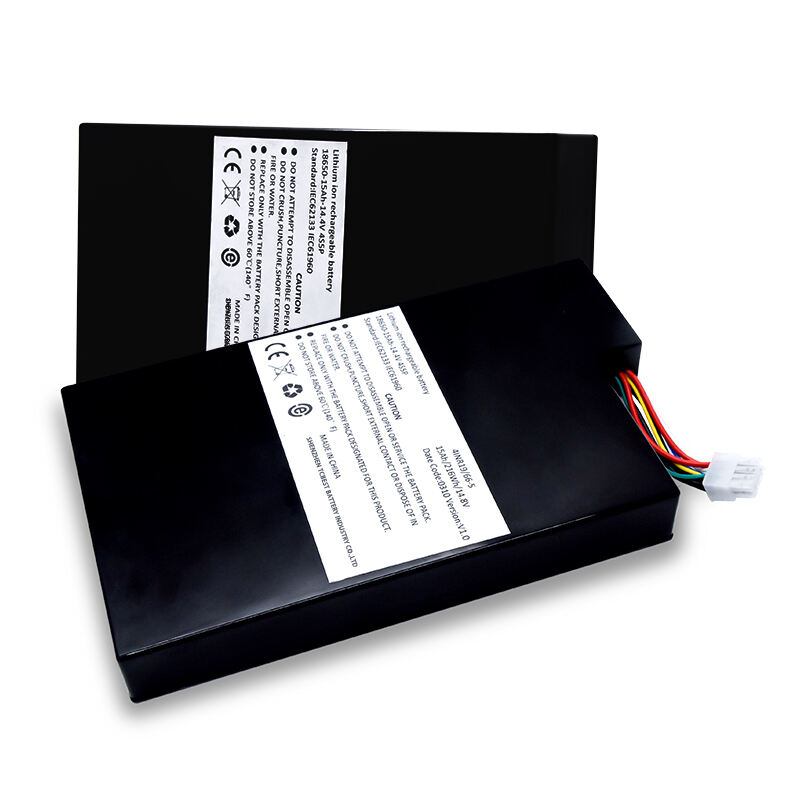Understanding the Fundamentals of Battery Pack Protection
Battery pack safety has become increasingly crucial as our reliance on portable electronic devices continues to grow. From smartphones and laptops to electric vehicles and power tools, battery packs are everywhere in our daily lives. While these energy storage solutions offer incredible convenience and functionality, understanding their safe operation is paramount to preventing accidents and ensuring optimal performance.
Modern battery packs incorporate sophisticated protection mechanisms, but user awareness and proper handling remain essential components of safety. Whether you're a casual user or someone who works with battery-powered equipment professionally, knowing the basics of battery pack safety can help prevent dangerous situations and extend the life of your devices.

Essential Safety Features in Modern Battery Packs
Protection Circuits and Monitoring Systems
Today's battery packs come equipped with built-in protection circuits that monitor various parameters to ensure safe operation. These sophisticated systems continuously track voltage levels, current flow, and temperature changes. When any of these parameters exceed safe limits, the protection circuit immediately interrupts the power flow, preventing potential hazards.
The Battery Management System (BMS) serves as the brain of these protection mechanisms, maintaining cell balance and preventing issues like overcharging or over-discharging. This intelligent oversight helps maintain the battery pack's health while protecting users from potential safety risks.
Thermal Management and Heat Dissipation
Heat management plays a crucial role in battery pack safety. Modern designs incorporate various cooling mechanisms, from passive heat sinks to active cooling systems in larger applications. These features help maintain optimal operating temperatures and prevent thermal runaway, a dangerous condition where excessive heat triggers a chain reaction of chemical reactions.
Quality battery packs utilize specialized materials and design elements that enhance heat dissipation. Proper spacing between cells, thermal interface materials, and ventilation channels all contribute to maintaining safe operating temperatures under various conditions.
Proper Storage and Handling Guidelines
Temperature and Environmental Considerations
Battery pack safety largely depends on proper storage conditions. The ideal storage temperature typically ranges between 20-25°C (68-77°F). Extreme temperatures can significantly impact both performance and safety. Avoid storing battery packs in direct sunlight or freezing conditions, as these environments can lead to degradation or damage.
Humidity control is another critical factor. Store battery packs in dry environments away from moisture, which can cause corrosion and potentially create short circuits. If transporting battery packs, ensure they're properly protected from physical damage and environmental exposure.
Charging Best Practices
Following proper charging protocols is essential for battery pack safety. Always use the manufacturer-recommended charger and avoid generic or incompatible charging devices. Don't leave battery packs charging unattended for extended periods, and never charge them near flammable materials or on heat-sensitive surfaces.
Pay attention to charging cycles and avoid frequent partial charges when possible. Modern lithium-based battery packs perform best when charged from around 20% to 80% capacity. This practice helps maintain cell health and reduces stress on the battery pack's components.
Signs of Battery Pack Deterioration
Physical Indicators
Regular visual inspections can help identify potential safety issues before they become serious problems. Look for signs of physical damage such as swelling, deformation, or leakage. Any unusual odors, particularly a sweet or chemical smell, could indicate internal damage requiring immediate attention.
Check connection points and terminals for signs of corrosion or wear. Damaged connectors can create resistance hotspots, leading to performance issues and potential safety hazards. If you notice any physical abnormalities, discontinue use and seek professional assessment.
Performance Warning Signs
Monitor your battery pack's performance for indicators of deterioration. Significantly reduced run time, unusual heating during normal use, or difficulty maintaining a charge are all warning signs that shouldn't be ignored. These symptoms might indicate internal damage or degradation that could compromise safety.
Keep track of your battery pack's age and usage patterns. Most battery packs have a limited lifespan, typically measured in charge cycles. As they approach end-of-life, the risk of safety issues increases, making replacement necessary.
Emergency Response and Safety Protocols
Immediate Actions for Battery Incidents
Know how to respond if a battery pack shows signs of failure. If you notice excessive heat, smoking, or unusual swelling, immediately disconnect the device if safe to do so. Move the battery pack to a non-flammable surface away from combustible materials, ideally outdoors or in a well-ventilated area.
Never use water on a battery fire, as it can make the situation worse. Keep a Class D fire extinguisher nearby if working regularly with battery packs. In case of severe incidents, evacuate the area and contact emergency services immediately.
Disposal and Recycling Procedures
Proper disposal of battery packs is crucial for environmental safety and regulatory compliance. Never dispose of battery packs in regular trash, as they can cause fires in waste processing facilities. Instead, locate certified recycling centers or battery collection points in your area.
Before recycling, discharge the battery pack to a safe level and isolate the terminals to prevent short circuits. Many electronics retailers and manufacturers offer battery recycling programs, making it convenient to dispose of old or damaged battery packs responsibly.
Frequently Asked Questions
How often should I inspect my battery pack for safety issues?
Regular visual inspections should be conducted monthly, with more frequent checks if the battery pack is used in demanding applications or extreme conditions. Additionally, perform a quick visual check before each charging session for any obvious signs of damage or deterioration.
What temperature range is safe for battery pack operation?
Most battery packs operate safely between 0°C and 45°C (32°F to 113°F). However, optimal performance and longevity are achieved when operating between 20°C and 25°C (68°F to 77°F). Always consult your specific battery pack's documentation for exact temperature specifications.
How can I maximize my battery pack's safety and lifespan?
To ensure maximum safety and longevity, use only manufacturer-approved charging equipment, avoid extreme temperatures, prevent physical damage, and follow recommended charging practices. Regular maintenance, proper storage, and timely replacement of aging battery packs are also essential for safe operation.

